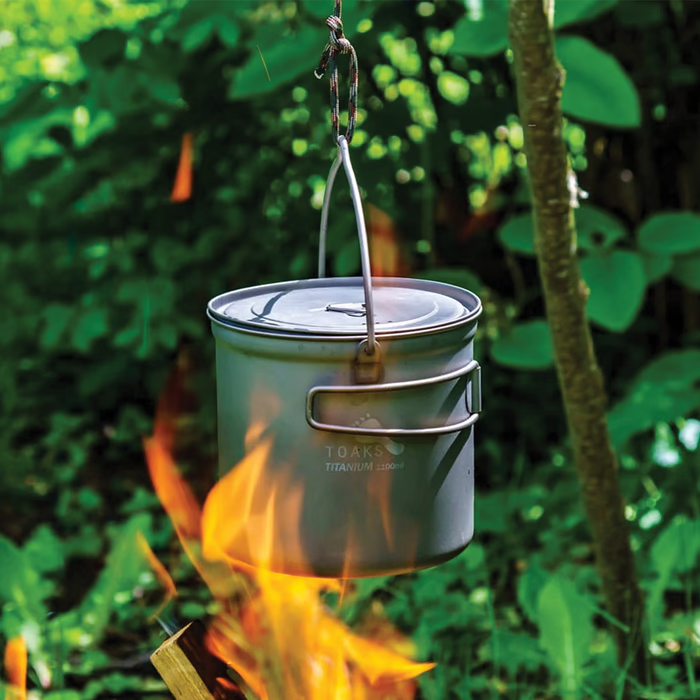
Camping is a wonderful way to escape the everyday hustle and bustle of life, reconnect with nature, and enjoy some delicious meals under the open sky. Whether you’re a seasoned camper or just starting out, having the right camping gear can make all the difference in your outdoor cooking adventures. One essential tool you’ll need is a reliable boiling pot, as it is the cornerstone of many camping meals. In this article, we’ll guide you through the process of choosing the perfect camping boiling pot for different cooking methods, ensuring that your meals are cooked to perfection while you bask in the beauty of the great outdoors.
Consider the Material
When it comes to choosing a camping boiling pot, the material is of utmost importance. The pot material will affect its durability, weight, heat distribution, and ease of cleaning. The most common materials used for camping boiling pots are stainless steel and aluminum.
Stainless Steel: Stainless steel pots are known for their durability and resistance to corrosion. They can withstand high temperatures and are less likely to warp or dent. Stainless steel pots also distribute heat evenly, preventing hotspots and ensuring thorough cooking. They are slightly heavier compared to other materials, but their longevity makes them a reliable choice for camping.
Aluminum: Aluminum boiling pots are lightweight, making them ideal for backpackers or those looking to minimize the weight of their camping gear. They heat up quickly, promoting fast cooking times, and are easy to clean. However, aluminum is prone to warping and scratching, so extra care is needed when handling and cleaning them.
Size and Capacity
The size and capacity of your camping boiling pot will depend on the number of people you’ll be cooking for and the types of meals you plan to prepare. If you’re camping alone or with a partner, a smaller pot with a capacity of around 1-2 liters should suffice. For larger groups, consider a pot with a capacity of 4-6 liters.
Additionally, make sure to consider the pot’s dimensions. A wider pot with a larger diameter will allow for more even heat distribution and better simmering, while a taller pot will be useful for boiling water or cooking foods with large volumes. Choose a size and shape that suits your specific cooking needs.
Lid and Handles
A well-fitting lid is essential for efficient cooking. It helps trap heat and steam inside the pot, reducing cooking time and saving fuel. Look for a camping boiling pot that comes with a tight-fitting lid to ensure your meals cook thoroughly and quickly.
Handles are another crucial consideration. Opt for a pot with heat-resistant handles, preferably made of silicone or other insulating materials. These handles will protect your hands from burns when handling the pot over an open flame. Folding or removable handles are also convenient for compact storage and transportation.
Compatibility with Cooking Stoves
If you’re planning to use a camping stove, it’s important to ensure that your boiling pot is compatible with the stove’s design. Many camping stoves have built-in support arms or pot supports that can accommodate a range of pot sizes. However, some stoves may require specific pot sizes or have weight restrictions. Check the specifications of your stove and choose a boiling pot accordingly.
Special Features
Consider any special features you may need in a camping boiling pot to enhance your cooking experience. Here are a few features to keep in mind:
Non-Stick Coating: Some camping boiling pots come with a non-stick coating, making them easier to clean and preventing food from sticking to the bottom. This feature can be particularly useful when cooking dishes such as pasta or rice.
Pouring Spout: A boiling pot with a built-in pouring spout can be handy for pouring liquids without spills or messes. It’s especially useful when making soups, stews, or hot drinks.
Strainer Lid: Some pots come with a lid that doubles as a strainer, allowing you to drain excess liquid without needing a separate colander. This feature can be convenient for cooking pasta, vegetables, or seafood.
Measurement Markings: Look for a pot with clear measurement markings on the inside. This will help you accurately measure ingredients and water, ensuring that your recipes turn out just right.
Budget Considerations
While it’s tempting to splurge on all the latest camping gear, it’s important to set a budget for your camping boiling pot. Determine the features that are essential to your cooking needs and prioritize those within your budget. Remember that a good quality pot will last for many camping trips, so it’s worth investing in a reliable option that suits your needs.
In conclusion, choosing the right camping boiling pot for different cooking methods can greatly enhance your outdoor cooking experience. Consider the material, size, lid and handle features, compatibility with your cooking stove, and any special features you may need. Keep in mind your budget and the specific meals you plan to prepare during your camping adventures.